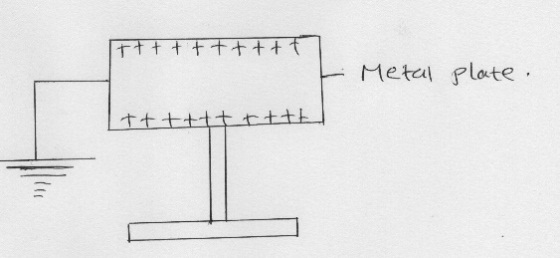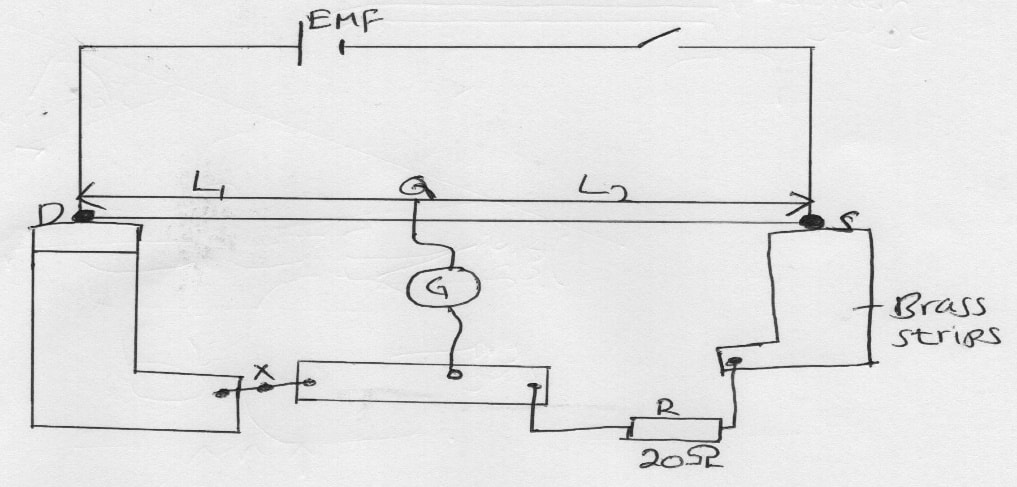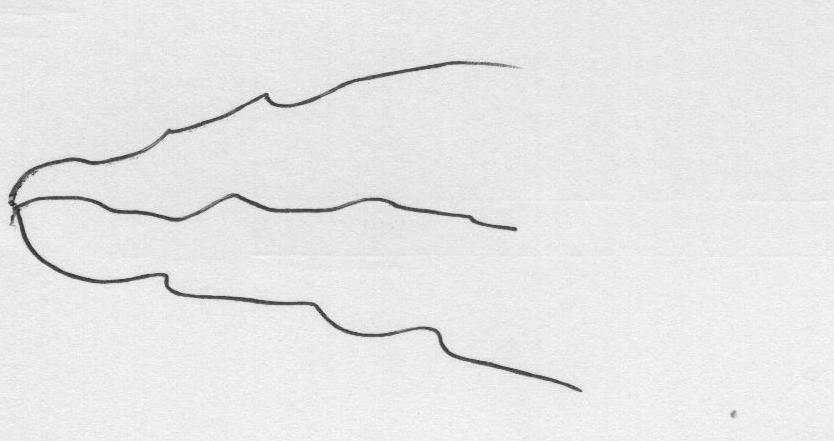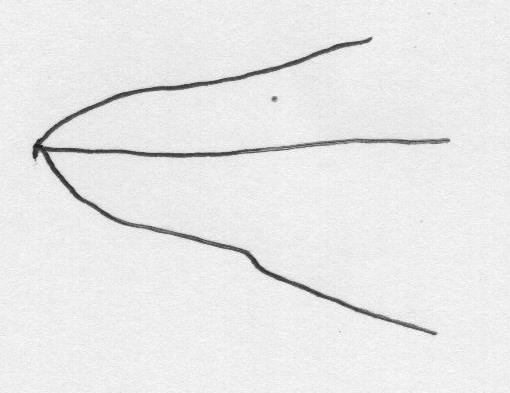SECTION A (25 Marks)
Answer all the questions in this section in the spaces provided
- The following diagram alongside shows two mirrors at an angle of 30o to each other. A ray of light is incident on one mirror at 300 as shown. Sketch the path of the ray until it leaves the mirrors indicating the angles at each point of contact with the mirrors. (3mks)

- A ray of right passes from air into a certain liquid at an angle of 500 to the normal. The ray is refracted such that the angle of refraction is 350 as it enters the liquid. Calculate the refractive index of the liquid. (3mks)
- State the necessary conditions for total internal reflection to take place. (2mks)
- A wire of resistance 27Ω is cut into three equal lengths. If the three wires are connected in parallel, determine the effective resistance. (2mks)
- Explain briefly how a P-type semiconductor is made. (1mk)
- A current of 5A is passed through a conductor whose resistance is 10Ω. How much energy is converted to heat in one hour (3mks)
- An electromagnet is made by winding insulated copper wire on an iron core. State two changes that could be made to increase the strength of the electromagnet. (2mks)
- Define the term ‘line of force’ as applied to magnetic fields. (1mk)
- A vibrator is sending out 8 ripples per second across a ripple tank. The ripples are observed to be 4cm apart. Calculate the velocity of the ripples. (2mks)
- Give a reason why x-rays but Not radio waves are used to detect fractured bones. (1mk)
- State two properties of cathode rays (2mks)
- The figure below shows a positively charged metal plate with an Earthing connection. Using an arrow, show the direction of charges through the earth connection and explain the final charge of the plate. (2mks)

- What is photoelectric effect? (1mk)
SECTION B (55Mks)
-
- The diagram below represents a metre bridge used to determine the resistance of an electrical component x

From the diagram,- Explain why wide brass strips are used as terminals. (1mk)
- Explain why a cell of low e.m.f. is preferable. (1mk)
- If null deflection was obtained when L1 was 60.0cm. Calculate the resistance of component marked X. (2mks)
- State three ways of ensuring that error are minimized during the experiment. (3mks)
- A uniform resistance wire of length 2.0m conducts a current of 0.25A when connected in series with a cell of e.m.f. 1.6V. How much current would be conducted if the wire is now cut into two equal lengths which are then arranged in parallel? (4 marks)
- The diagram below represents a metre bridge used to determine the resistance of an electrical component x
-
- The distance of separation between the plates of a certain capacitor is reduced. State how this affects the capacitance of the capacitor. (1mk)
- You are provided with the following apparatus used for studying charging of a capacitor; an uncharged capacitor, voltmeter, milliameter, 6v battery, connecting wires, a switch and a load resistor R. (1mk)
- Draw a circuit diagram that can be used to charge the capacitor. (2mks
- Use the circuit diagram drawn above to explain how the capacitor gets charged. (2mks)
- State the purpose of resistors R. (1mk)
- The zinc plate shown below is connected to a negatively charged electroscope and is exposed to ultra violet radiation.

- Explain what happens to the leaf of the charged electroscope. (3mks)
- If the same experiment is repeated using a positively charged electroscope, explain the observation (3mk)
-
- State one difference between transformers and an induction coil. (1mk)
- State two way through which energy is lost in a transformer. (2mks)
- A transformer has 1000 turns in its secondary coil and 10 turns in its primary coil. An alternating current of 2.5A flows in the primary circuit when it is connected to a 12V a.c supply.
- State the type of transformer (1mk)
- Calculate the power input to the transformer. (1mk
- Calculate the e.m.f across the secondary coil. (3mks)
- Determine the maximum current that could flow in a circuit connected to the secondary coil if the transformer if its 80% efficient. (Use the e.m.f in secondary as calculated in (iii) above). (3mks)
- In transmitting power, why is it necessary to step up voltage before transmission? Explain. (2mks)
-
- Define radioactivity. (1mk)
- Identify the radiations of tracks in the figures below. (2mks)
-
- Identify radiations X and Y using the figure below. (2mks)

- The following reaction is part of radioactive series.
Identify radiation h and find figures of b and c.
-
- State Ohm’s law. (2mks)
- State two factors that affect heating by electric current (2mks)
- Determine the power of a motor which has a p.d of 240v applied across it when a current of 0.30A passes through it. (2mks)
- Explain why a fuse is always connected to the line wire in an electrical appliance (1mk)
Join our whatsapp group for latest updates
Tap Here to Download for 50/-
Get on WhatsApp for 50/-
Download PHYSICS PAPER 2 - 2017 MURANG'A MOCK EXAMINATION.
Tap Here to Download for 50/-
Get on WhatsApp for 50/-
Why download?
- ✔ To read offline at any time.
- ✔ To Print at your convenience
- ✔ Share Easily with Friends / Students




